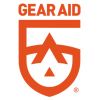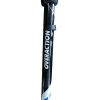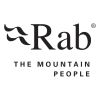Mountaineering - Hiking Boots

Mountaineering boots – General
https://www.cdc.gr/mountain-clothing-en/shoes/trekking/
Mountaineering boots are one of the most important items of our equipment. They consist of the sole, the frame and the upper part. There are two main categories of boots, depending on their intended use:
The boots for low or medium mountain
The high and very high mountain boots
If we choose poor quality boots this will result in blisters, pain, cold and possible frostbite. For this reason, we should do extensive market research and choose the most suitable one. The criteria we should follow when choosing a boot are:
Construction materialsFunctionalityComfortSafetyWeight
1.1 Boots for low and medium-height mountain (mountain hiking or simple mountaineering)https://www.cdc.gr/mountain-clothing-en/shoes/trekking/ These boots are designed mainly for long-term mountain hiking at relatively low altitudes, winter & summer. We can describe them as stiff boots, the sole is not completely rigid but not completely soft like in a sports shoe. The upper part is usually a combination of leather and densely woven nylon fabric with a special coating of breathable membranes, Gore-Tex, which offer waterproofing and better water vapor extraction.Staying in the snow for long hours can be problematic since they do not have sufficient thermal insulation. They also cannot be considered completely waterproof. They are comfortable enough for long hikes while at the same time possessing the basic features for the needs of a short winter climb. They are generally recommended for general mountaineering without many special requirements. 1.2 High and very high mountain bootshttps://www.cdc.gr/mountain-clothing-en/shoes/mountaineering-boots/ They are divided into the following two categories according to their robustness and rigidity: Almost rigidRigid -Almost rigid They offer significant stiffness but with time and a lot of use they soften. These are tougher boots with waterproof skins and are usually taller than the previous category (1.1). Many of them have insulation and heat-glued soles, they are designed for mountaineering, i.e. winter climbs that present technical difficulties such as mixed fields, climbing passages and even vertical ice.The materials used to waterproof the main boot (except the sole) are leather of variable thickness with special treatment, Gore-Tex type membranes, and plastic.
-Rigid Boots
In rigid boots, both their construction and the quality of the materials used are such as to offer complete rigidity. The sole of the boot remains permanently flat in any condition of use. Their use is mainly for climbing on snow, ice and rock. Also when walking, their rigidity and sturdiness allow the creation of small steps in hard snow.
Most allow the application of a three-layer system for the foot. These three layers are the sock, which comes into direct contact with the foot absorbing sweat, the inner shoe which offers protection from the cold and the outer plastic casing of the boot which offers waterproofing and rigidity. We must also say that these boots have been identified with plastic boots but there are also models with leather.
Source: Adventure Club Hellas
Recent posts
-
20/03/2024Guide for crampons
-
19/02/2024Hangboarding for beginners
-
06/02/2024Rock Climbing in Occupational Therapy
-
23/11/2023Climbing Grades
-
22/11/2023Climbing in psychotherapy
-
16/11/2023What is Bouldering
-
15/11/2023Winter Tents
-
15/11/2023Trad VS Sport Climbing
-
07/11/20233 Season Tents
-
03/11/2023Summer Tents
-
02/11/2023Lifespan Of Your Climbing Gear – Part A (Harness, Rope, Slings and Webbing)
-
02/11/2023Lifespan Of Your Climbing Gear – Part B Metal Components
-
30/10/2023What Is “Softshell”?
-
30/10/2023Our Blog
-
30/10/2023Climbing Helmets
-
30/10/2023Base Layers
-
30/10/2023Sleeping Mats
-
30/10/2023Sleeping Bags
-
30/10/2023Waterproof Membranes
-
30/10/2023Mountaineering - Hiking Boots
-
30/10/2023Slacklining, ένας εναλλακτικός τρόπος γυμναστικής.
-
30/10/2023THE LOG BOOK
-
30/10/2023Nikwax secrets of waterproofing
-
30/10/2023INFLATABLE MATTRESS SLEEP
-
30/10/2023Ice axe
-
30/10/2023ΙNFORMATION FOR CRAMPONS
-
30/10/2023Superlight Tents
-
30/10/2023Washing and maintenance of the sleeping bag
-
30/10/2023Climbing Shoes - Quick Buying Guide
-
30/10/2023Nail Vernis Aquaglutene - Vade Retro
-
30/10/2023Mountain cookware






































































































































































